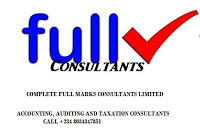Fixed Assets Verification for Business Plan – Important elements of fixed assets verification for business plan are assets register, assets verification methods and procedures. Others are internal control processes relating to physical existence of the assets, assets acquisition and disposal authorisation, and assets value (historical, current and revaluation costs).
What Do You Want:
Table of Contents
If you are involved in one of the above categories, this article is for you. Whether a new business or an existing one you will always want to confirm the existence, ownership and value of your fixed assets from time to time. This article aims at showing you how to go about it.

Fixed Assets Verification for Business Plan Check out for business plan samples, example of marketing plan, business plan outline for writing a business plan. In fact, business plan is important for creating a business plan by business plan writers. These are essential while we write for you your restaurant business plan, food truck business plan, gym business plan with financial projections. Would you want a small business plan marketing strategy plan? We also develop a one page business plan in a business plan format.
Assets Verification/Audit:
asset?
Fixed Assets Verification for Business Plan
What really are the information needed from this register and the verification exercise?
- Cost – this is the historical cost, i.e.
the cost of purchase. Some times other type of costs like market price, current
price, revalued price come to play. - Authorization – the authorisation for the
acquisition is verified here. - Value – the aggregate value in a particular
class of fixed asset is verified. This will show additions, disposals and
accumulated depreciation. - Existence – the quantity in existence is
verified here. - Beneficial Ownership – If the assets
are owned by the business, leased or on hire purchase – will be verified here. - Presentation in the accounts
– This is necessary. For instance, assets on hire purchase do not need to
reflect as the business assets.
- This include physical inspection – this is the
process of actually seeing and touching the fixed assets to confirm it’s
existence. - Another method is the verification of the title
making use of every relevant documents. It must show that the asset in question
belongs to the business or not. - Thirdly, third party verifications are also done.
This is by confirming from debtors, banks, leasing or hire purchase companies the transactions of
such assets. - Lastly, the accounting documentation including the
assets register ( to verify existence, acquisition, disposal and depreciation),
internal control measures are verified. Note that an old asset should have to
appear in the previous year’s balance sheets, while current year purchases will
have readily available acquisition documents.
How do these concern you?
- You need to show your business net worth. No
investor would want to be wooed into investing. He must be sure of the net
worth of the business. And you know that the major value of the business
resides in its physical assets. The assets must therefore, be in existence and worth
at least the book values. - Again, these fixed assets generate fix costs that
are charged to the income statement periodically, in form of depreciation. This
and the administration expenses form what is called OPEX ( Operation Expenses).
It also plays part in cash flow statement of the business. - An investor can come over in form of merger or acquisition. This will certainly
require complete business valuation process. In any of these two cases a
complete asset verification exercise is very necessary. - No bank will want to give you loan or bank guarantee
without knowing your business value. - In addition, an incoming investor who is coming to
take a percentage of the shareholding will certainly know the value of the
business. - Fixed assets have tax implications because the tax
authorities do not accepts the management accounts depreciation allowances,
instead they grant their own capital allowances. The purchase of new fixed asset and disposal of an old one
all have tax implications.
In doing your business plan, be it an elaborate one, simple or one or two page business plan, you make assumptions which give indications of what you would want to achieve within the specified period.
READ ALSO: CAPEX Projection for Business Plan
Fixed Assets Verification for Business Plan
Completefmc. Offerings:
On Fixed Assets Verification for Business – get online business ideas 2022/2023 for direct selling activities from Completefmc.com. These are online business opportunities with franchise opportunities. These international business opportunities are proven online money making opportunities. As a matter of fact, these business ideas include US, Europe and Asian franchise opportunities and for online business opportunities from home, real estate business and the distributive industry opportunities. As a matter of fact, these are strategies to increase sales in retail. Contact us on [email protected] or +234 8034347851
Fixed Assets Verification for Business Plan

Deacon Anekperechi Nworgu, a seasoned economist who transitioned into a chartered accountant, auditor, tax practitioner, and business consultant, brings with him a wealth of industry expertise spanning over 37 years.



